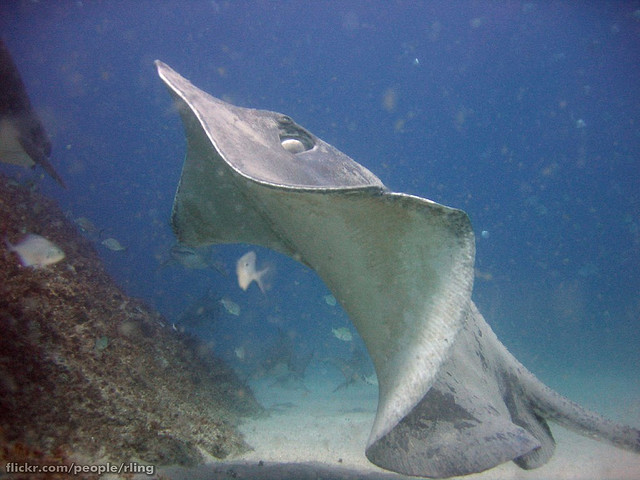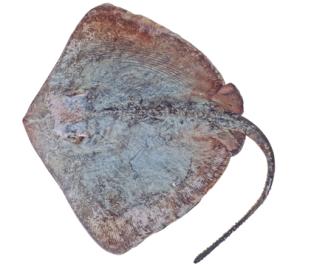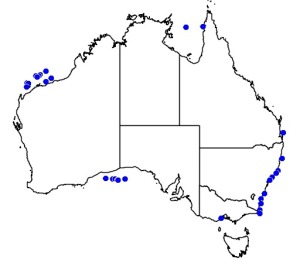�
�
�
���
Dasyatis thetidis
Black Stingray
Kingdom
Animalia
Phylum
Chordata
Class
Elasmobranchii
Order
Myliobatiformes
Family
Dasyatidae
Genus
Dasyatis
Species
Dasyatis thetidis
Colours
Distinguishing features
A large, plain, dark stingray with a broadly angular snout and pectoral disc; tail thick-based and tapering to a slender whip, much longer than body; upper disc and tail of large juveniles and adults roughened by large flat thorns (absent in small individuals); 1 or 2 stings on tail.
Similar to the Smooth Stingray (Dasyatis brevicaudata). They are both large, dark above and pale below. The Black Stingray lacks white spots and has thorn-like denticles along the dorsal midline of the disc.
Size
- Up to 400 cm (TL)
- Up to 180 cm (Disc Width) - applies to Disc Width
Depth range
- From 0 m to 440 m - applies to Occurs from very shallow to very deep. Recorded at 440m.
Synonyms
Similar taxa
Distribution
Distribution and habitat preferences
Common inshore but reported to 440 m depth. Found in estuaries, lagoons, and around reefs. Reported to enter freshwater in Australia. Found on soft bottoms
Web resources
Danger
- rarely fatal - Like the Smooth Stingray the Black Stingray is considered more curious than aggressive and is often observed by divers. It usually has one barb (but may on occasion have two). The venomous spine (the sting) is capable of inflicting severe or potentially fatal wounds.



